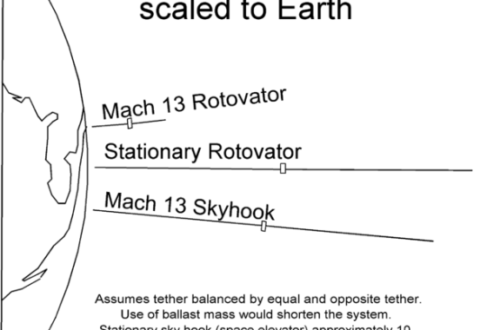Stargazing Calendar for July 2023

Looking for the July 2025 stargazing calendar?
Get ready for a month filled with celestial wonders! In July, Mercury transitions in the sky, Venus and Mars dance closely, and comets reach perihelion and perigee. Don’t miss the supermoon, many conjunctions, asteroid 15 Eunomia and Pluto at opposition, three meteor showers, and other breathtaking events. Grab your telescope and prepare for a dazzling show in the night sky throughout the month of July.
Would you like to be notified of stargazing events?
Positions of the Planets in July 2023
- Mercury: The closest planet to the Sun can be seen at dawn and dusk travelling across the constellation of Gemini. This planet, being the closest to the Sun, will appear to move quickly in the night sky and its position will change in the following weeks.
- Venus: The sister planet can be seen near Mercury travelling across the constellation of Leo. Just like Mercury, Venus can only be seen at dawn and dusk.
- Mars: The red planet can be seen in the constellation of Leo.
- Jupiter: The gas giant is visible in the constellation of Aries. Jupiter can easily be spotted with the naked eye, even in highly illuminated cities.
- Saturn: The ringed giant can be seen with the naked eye in the constellation of Aquarius.
- Uranus: The gas giant can be seen in the constellation of Aries with the use of a telescope.
- Neptune: The blue giant requires a telescope pointed in the constellation of Pisces in order to be seen.
Positions of Dwarf Planets and Large Asteroids in July 2023
- Ceres: The asteroid belt’s lone dwarf planet can be seen in the constellation of Virgo with the help of a telescope.
- Vesta: This large asteroid can be seen in the constellation of Taurus with a telescope.
- Pallas: The asteroid can be observed with a telescope in the constellation of Leo.
- Pluto: This distant dwarf planet can be found in the constellation of Capricornus with the help of a large telescope.
Astronomical Events for July 2023
The month of July starts with three astronomical events on the first day of the month. First of all, Mercury will be at superior solar conjunction. Although not easy to observe due to the proximity to the Sun, it is an important event because it marks the transition from Mercury’s appearance in the morning sky to the evening sky. Keep your eyes safe and never point a telescope or binoculars directly at the Sun. At the same time Mercury will reach apogee (most distant from Earth) because it will be at the exact point opposite to Earth, on the other side of the Solar System. It will reach a maximum distance of 1.33 AU from Earth and will be located in the constellation of Gemini.
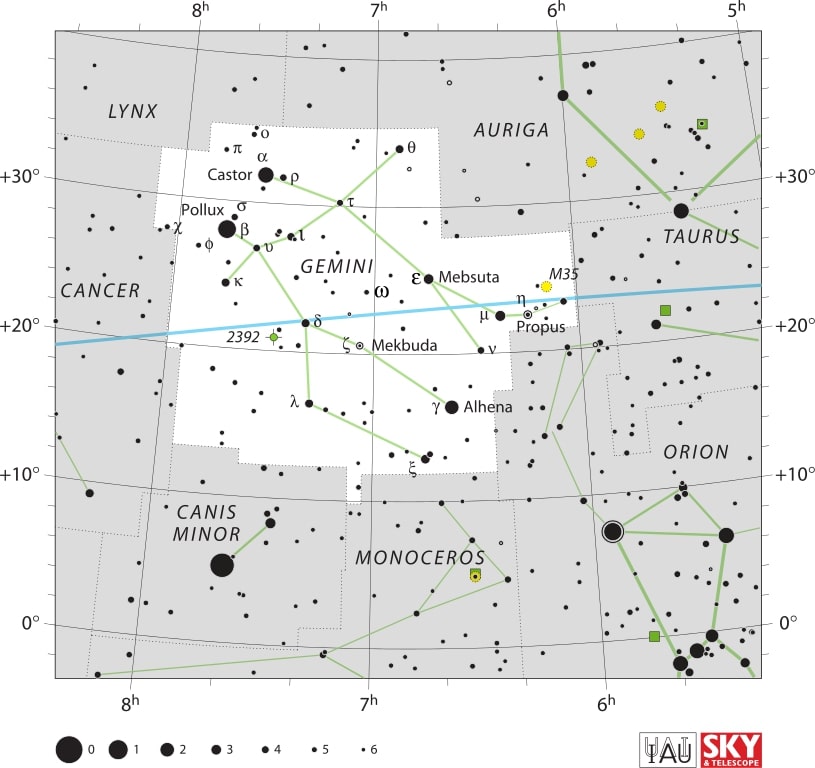
On the same day, there will be a close approach of Venus and Mars, also known as an appulse. The two planets will pass within 3°33′ of each other in the constellation of Leo. Venus will be at apparent magnitude -4.5 and Mars will be at 1.7.

Also on the 1st of July, comet C/2023 E1 (ATLAS) will reach perihelion. This means the comet will make its closest approach to the Sun at a distance of 1.03 AU. Look for it in the constellation of Ursa Minor with a large telescope. The British Astronomical Association Comet Section (BAA) estimates that it may be at around apparent magnitude 10.
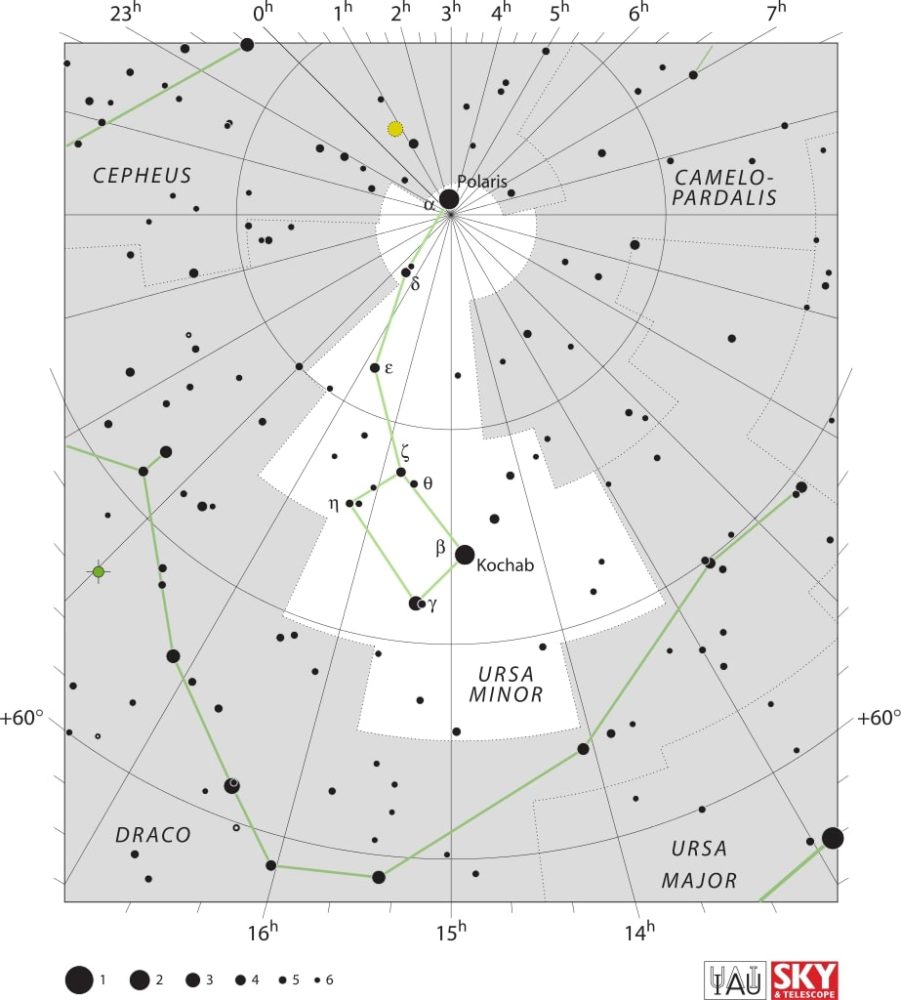
Then on July 3, there will be a supermoon. The Moon will be near its closest approach to Earth and so will look slightly larger and brighter than usual. It will be the first of four supermoons in 2023. The full moon will occur at 11:40 UTC making it the brightest time of the supermoon. It is known as the Buck Moon, Thunder Moon, or Hay Moon, depending on the culture.
On July 6, there will be a conjunction of the Moon and Saturn. The two celestial bodies will share the same right ascension and pass within 2°40′ of each other in the constellation of Aquarius. At almost the same time, the two objects will also make a close approach, known as an appulse. This means they’ll get even closer to each other (at 2°25′ of each other) but no longer sharing the same right ascension. The Moon will be at apparent magnitude -12.5, and Saturn at 0.6.

Later on July 7, asteroid 15 Eunomia will be at opposition. Regardless of where in the world you are, the asteroid will reach the highest post in the sky at around midnight local time, because it will be exactly opposite to the Sun. To observe it during different hours, look in the constellation of Sagittarius. Eunomia will pass within 1.679 AU of Earth, reaching a peak brightness of magnitude 8.8. You will need binoculars or even a telescope to observe it. Eunomia is a very large asteroid (around 270 km in diameter) in the inner asteroid belt and the largest of the stony (S-type) asteroids. It was discovered by Annibale de Gasparis in 1851, and named after Eunomia, a minor goddess of order and law in Greek mythology.
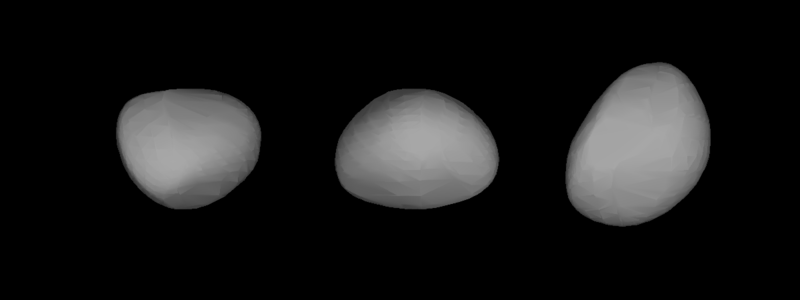
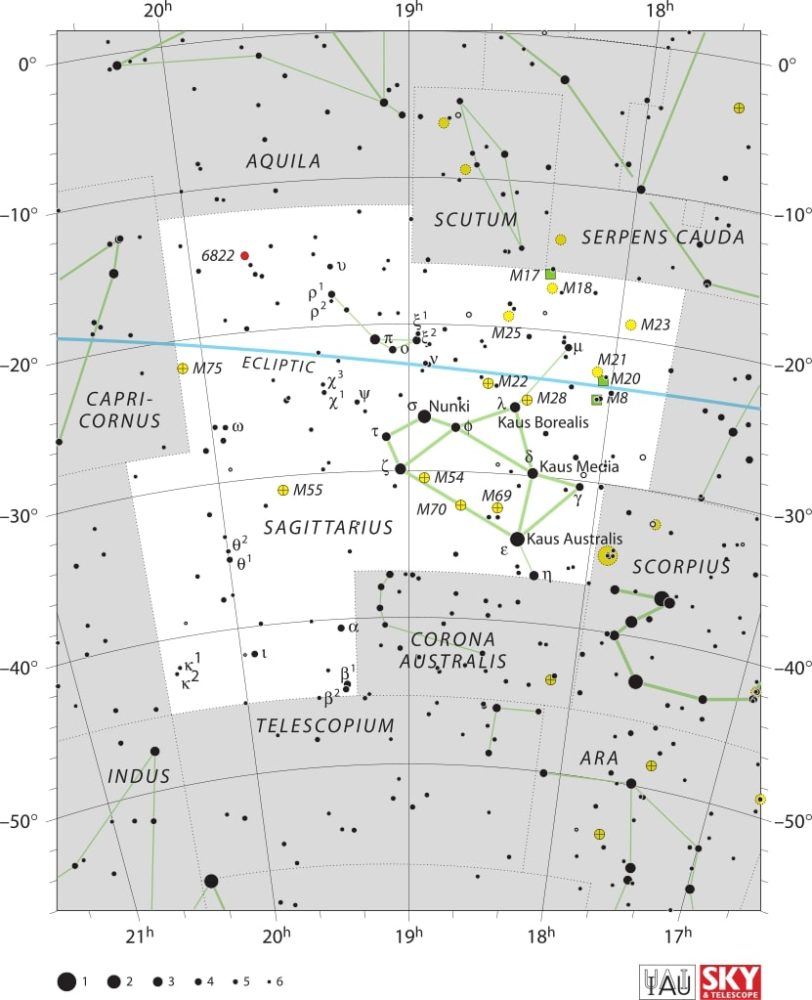
On July 9, Venus will reach its greatest brightness. It will be shining brightly at apparent magnitude -4.5, visible to the naked eye. Look for the planet in the constellation of Leo.
Then on July 10, the July Pegasid meteor shower will peak. It is a weak meteor shower with only about 3 meteors per hour on average during the peak and given ideal conditions. The meteors will enter the atmosphere very fast at a speed of about 64 km/s. Some meteors may also be spotted between July 4 and Jul 17. They will appear to radiate from the constellation of Pegasus.
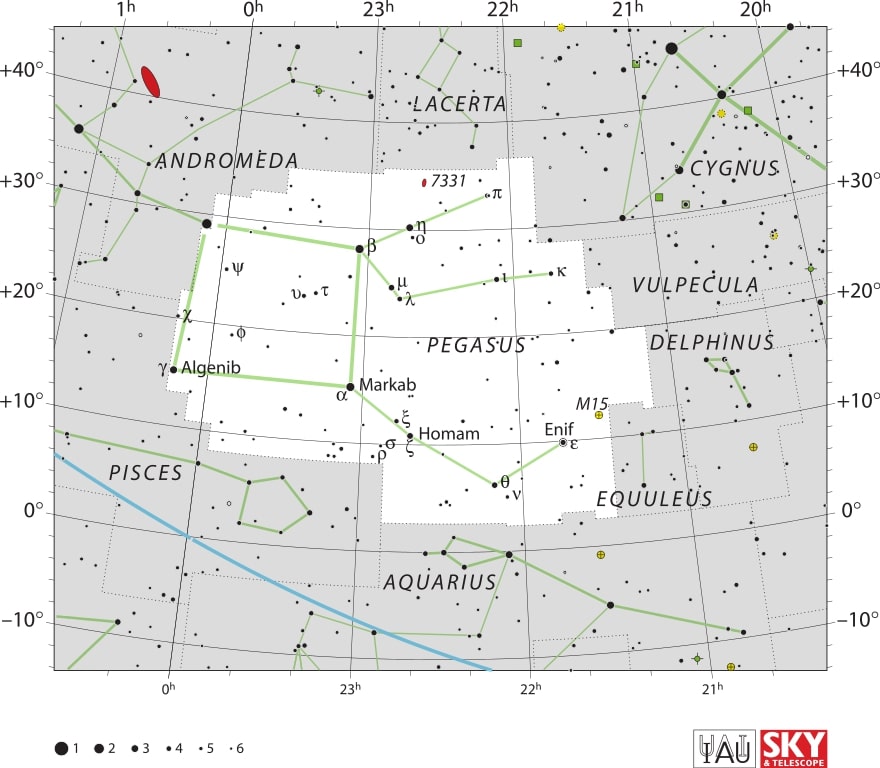
On July 11, there will be a conjunction of the Moon and Jupiter. The two celestial bodies will share the same right ascension and pass within 2°13′ of each other. At around the same time they will also make a close approach (appulse) and get just a bit closer to each other (but no longer sharing the same right ascension) at 2°03′ of each other. The Moon will be at apparent magnitude -11.3, and Jupiter -2.3. Look for both objects in the constellation of Aries.
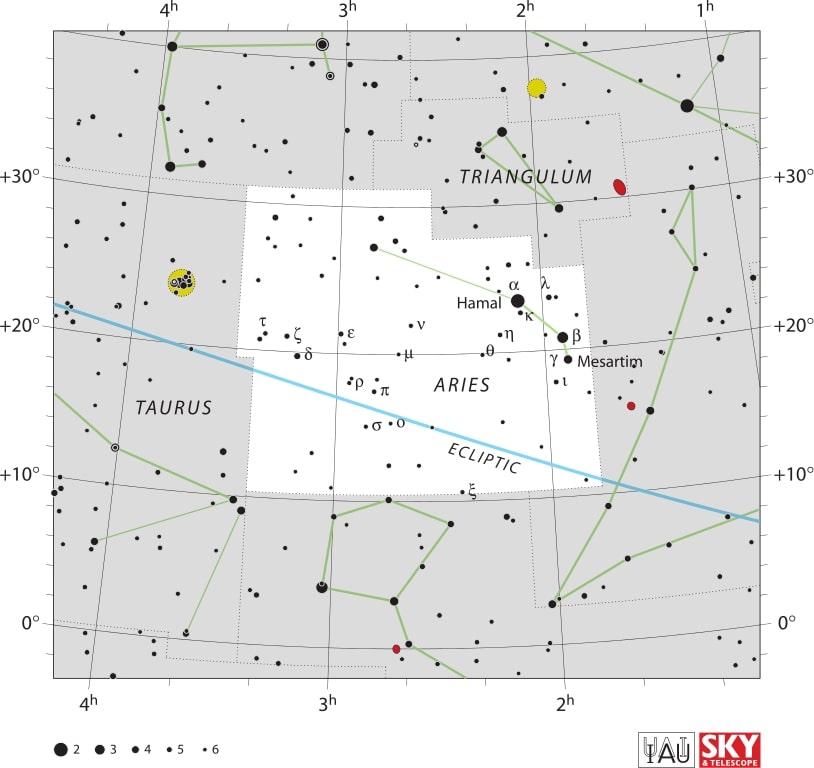
On July 12, the comet 185P/Petriew will reach perihelion, meaning it will reach the closest point to the Sun, at a distance of 0.93 AU. The BAA estimates the brightness of this comet will be about magnitude 11. Look for it in the constellation of Taurus.

On July 19, there will be a conjunction of the Moon and Mercury. The two objects will share the same right ascension and pass within 3°30 of each other in the constellation of Cancer. The Moon will be at apparent magnitude -8.5, and Mercury at -0.4. The pair will be very close to the Sun and so be very careful when making daytime observations to not point your telescope or binoculars directly at the Sun. This can result in immediate and permanent blindness. The pair will be too widely separated to fit within the field of view of a telescope anyway, so why bother trying at all? Keep your eyes safe and instead focus on the planets Venus and Mars, which are also nearby, waiting for their own conjunctions in the next couple of days. You can admire this celestial gathering of three planets and the Moon with the naked eye.

Then on July 20, there will be a conjunction of the Moon and Venus. The Moon would have moved closer to Venus since the previous day. (Mars and Mercury are still nearby.) The Moon and Venus will share the same right ascension and pass within 7°51′ of each other, both in the constellation of Leo. The Moon will be at apparent magnitude -9.5, and Venus at -4.4.
On the same day, the comet C/2021 T4 (Lemmon) will reach perigee, meaning it will be at its closest point to the Earth at a distance of of 0.54 AU, and will also be at peak brightness with an apparent magnitude of 9 according to an estimate by the BAA. This is why it’s the best time to observe this comet. With it being a long period comet, it won’t be back near the Earth for millions of years. So don’t miss your chance! Look for it in the constellation of Telescopium.

On July 21, there will be a conjunction of the Moon and Mars. The pair will share the same right ascension and pass within 3°16′ of each other in the constellation of Leo. At around the same time, the two celestial bodies will get even closer and make a close approach (appulse), passing within 2°57′ of each other. The Moon will be at apparent magnitude -10.0, and Mars at 1.8. The planets Mars and Mercury are still lingering nearby.
On July 22, Pluto will be at opposition. The dwarf planet will reach its highest point in the sky at around midnight local time because it will be exactly opposite to the Sun in the sky. At about the same time, Pluto will also reach perigee, the closest point to the Earth, at 33.80 AU from Earth. It’s at this time that Pluto will be brightest in the sky. Despite this, you will need a telescope to spot this dwarf planet because it will have an apparent magnitude of only 14.9. You can find it in the constellation of Capricornus.
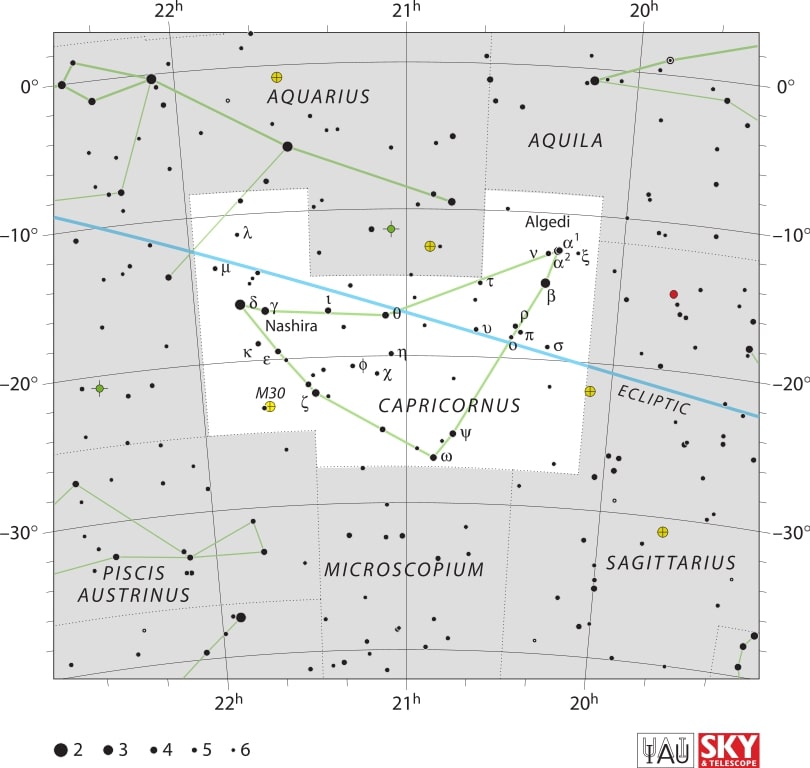
On July 26, there will be a conjunction of Venus and Mercury. The two planets will share the same right ascension and pass within 5°17′ of each other in the constellation of Leo. Venus will be at apparent magnitude -4.3 and Mercury at -0.1. Mars still lingers nearby and so you can observe all three planets together, but none of the planets will fit together in a single field of view of a telescope unfortunately. It’s still a great sight to the naked eye though!
Then on July 27, Mercury will reach highest altitude in evening sky. This means Mercury will reach its highest point in the night sky above the horizon for July-August, making it a good time to observe the elusive planet. It will have an apparent magnitude of 0.3. Look in the constellation of Leo.
On July 28, the Piscis Austrinid meteor shower will peak. It is a small meteor shower with only about 5 meteors per hour on average during the peak assuming ideal conditions. Some meteors will also be visible between July 15 and August 10. They will appear to radiate from the constellation of Piscis Austrinus. Unfortunately the Moon will be very bright and will interfere significantly with observation.
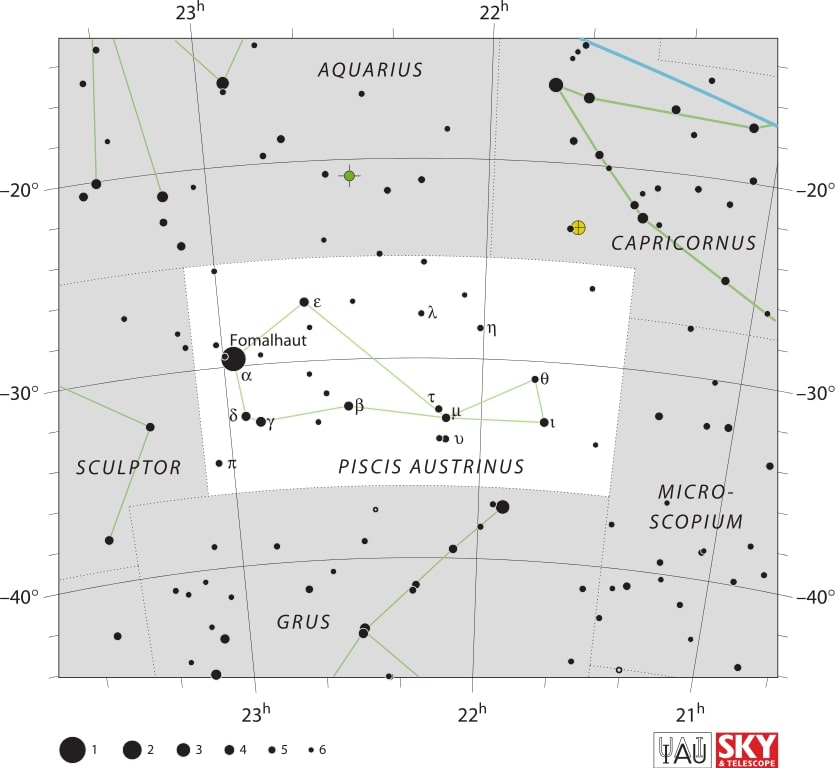
On July 30, the Southern δ-Aquariid meteor shower will peak. The meteor shower is much larger with an average of 25 meteors per hour during the peak if conditions are ideal. Some meteors can also be observed between July 12 and August 23. They will enter the atmosphere at a speed of around 41 km/s. Viewers from the Southern Hemisphere will have a better show with a bigger share of the meteors, but some can still be seen from the Northern Hemisphere. They will appear to radiate from the constellation of Aquarius. The Moon will still be very bright and unfortunately interfere with observation, but at least with a larger number of meteors, many should be bright enough to still be seen, especially in the Southern Hemisphere.
On the same day, the α-Capricornid meteor shower will peak. Another smaller meteor shower, the alpha Capricornids will be visible between July 03 and August 15. During the peak there will be an average of 5 meteors per hour as long as conditions are ideal. They will appear to radiate from the constellation of Capricornus. They originate from the comet 169P/NEAT and they will enter the atmosphere at around 23 km/s.
And finally, on July 31, the comet C/2021 T4 (Lemmon) will reach perihelion (closest approach to the Sun) at a distance of 1.48 AU. I already mentioned this comet earlier when it reached perigee on July 20, and now it reaches a new milestone in its path across the inner Solar System. Look in the constellation of Norma. The BAA estimates its brightness to be around apparent magnitude 9, so you will need a telescope to spot it.

Moon Phases in July 2023
As you know, the Moon has a big impact on the visibility of celestial bodies in the night sky. So here are the Moon’s phases for this month:
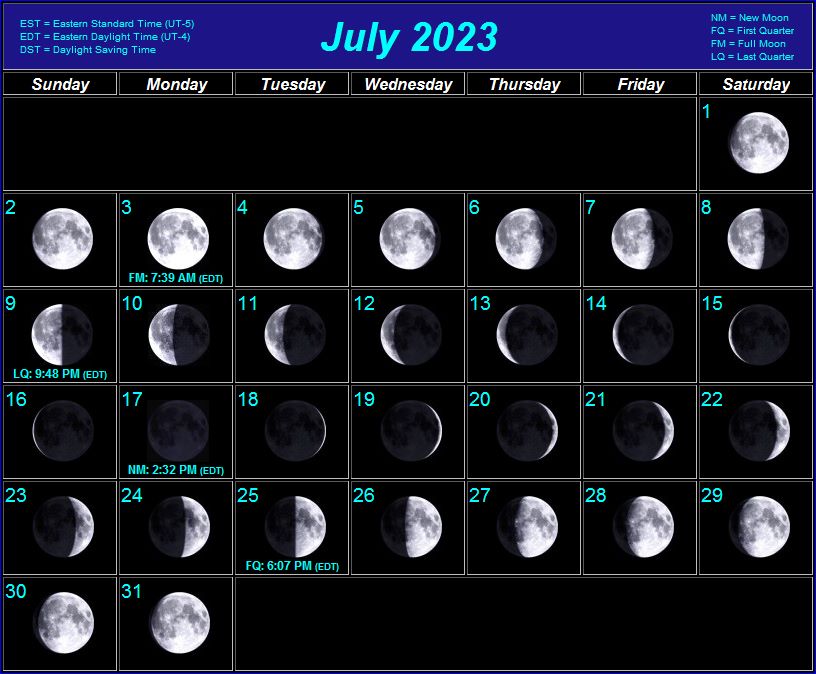
Major astronomical events next month – August 2023
- August 8 – η-Eridanids meteor shower peak.
- August 10 – Asteroid 10 Hygiea at opposition.
- August 13 – Perseid meteor shower peak.
- August 18 – κ-Cygnid meteor shower peak.
- August 26 – Asteroid 8 Flora at opposition.
- August 27 – Saturn at opposition.
- August 31 – Aurigids meteor shower peak.
Conclusion
July is shaping up to be a spectacular month for stargazers and astronomy enthusiasts alike. With a plethora of celestial events, from planetary conjunctions and meteor showers to comets reaching perihelion and perigee, the night sky promises to dazzle and delight. Among the highlights is Pluto as well as asteroid 15 Eunomia at opposition. As we prepare our telescopes and binoculars, let us immerse ourselves in the beauty of the cosmos and be reminded of the grandeur and wonder of the universe that surrounds us. Enjoy the celestial spectacle that July brings, and may it inspire us to continue exploring and marveling at the mysteries of space. Happy stargazing!
Sources:
- Planetary ephemerides produced by NASA’s Jet Propulsion Laboratory (JPL)
- International Meteor Organization
- British Astronomical Association Comet Section
See also:
- Previous month’s calendar: Stargazing Calendar for June 2023
- Next month’s calendar: Stargazing Calendar for August 2023
Would you like to receive similar articles by email?




